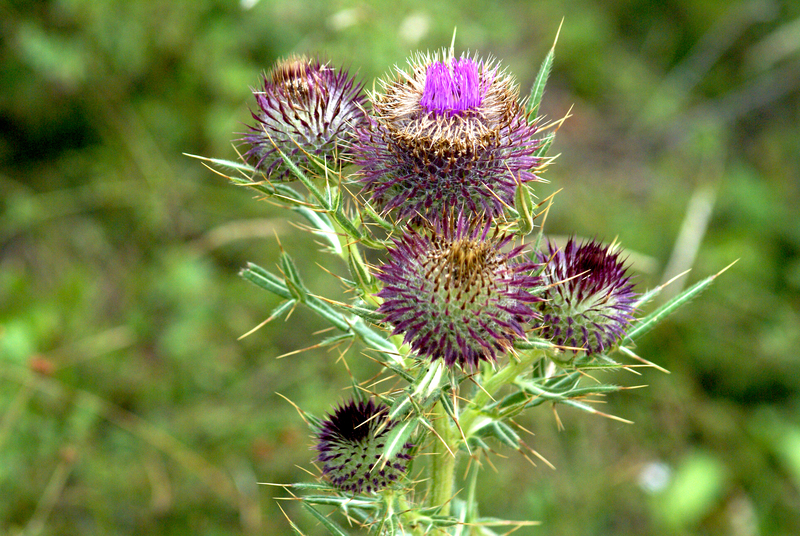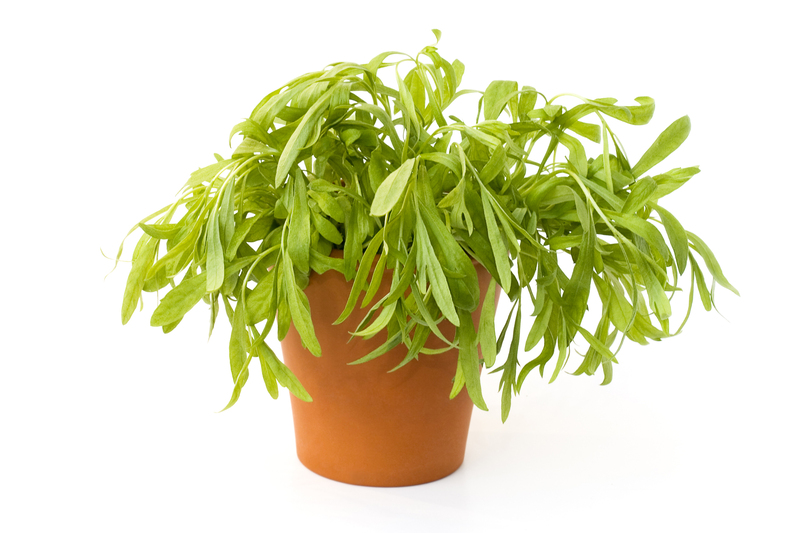How to Ensure Your Garden Plants Thrive in Cold Weather
Posted on 25/06/2025
As the chill of winter creeps in, many gardeners face pressing questions about how to ensure their garden plants thrive in cold weather. While some plants can withstand freezing temperatures, others might struggle, with growth stunted or even total loss. Fortunately, with a bit of planning and some strategic care, your plants can flourish and remain resilient even as the mercury drops. This comprehensive guide will provide you with actionable tips, expert strategies, and practical solutions for protecting your garden in cold climates and ensuring year-round vitality.
Understanding the Impact of Cold Weather on Garden Plants
Before implementing protective measures, it's vital to understand how cold weather affects garden plants. Cold temperatures, frost, snow, and chilling winds can pose challenges such as:
- Frostbite: Cells in leaves and stems may burst, causing blackening and wilting.
- Root Retraction: Cold soil slows plant metabolism and restricts water uptake.
- Desiccation: Harsh winds pull moisture from leaves faster than roots can replace it.
- Growth Inhibition: Extended cold periods trigger dormancy or slow down essential growth processes.
Different Plant Cold Tolerance Levels
It's important to categorize your garden based on cold hardiness. Tender annuals, tropicals, perennials, and woody shrubs all have varying resistance levels. Always check the USDA hardiness zone for plants to select varieties well-suited for your region.

Choosing The Right Plants for Cold Weather Gardening
The most foolproof way to guarantee your garden plants survive and thrive in winter is by selecting the right species. Here's how:
- Research Cold-Hardy Varieties: Consult local nurseries for recommendations on cold-tolerant plants such as kale, spinach, pansies, hellebores, and evergreens.
- Native Choices: Native plants are naturally adapted to your region's climate fluctuations.
- Planting at Proper Times: Sowing and transplanting during the right season allows roots to establish before extreme cold.
Certain Plants That Excel During Cold Spells
Here are a few robust options for winter-proof gardening:
- Vegetables: Cabbages, broccoli, garlic, onions, leeks, and winter lettuces.
- Herbs: Chives, rosemary, sage, and thyme.
- Flowers: Violas, primrose, snowdrops, and camellias.
- Shrubs: Boxwood, holly, and junipers.
Effective Strategies to Protect Your Garden in Cold Climates
Proactivity is key. Below are essential measures to ensure your garden plants thrive in cold temperatures:
1. Mulching: Nature's Insulator
Applying a thick layer of organic mulch around the base of your plants is a simple yet powerful defense against freezing temperatures. Mulch (like straw, shredded leaves, or wood chips) acts as a barrier, regulating soil temperature and moisture.
- How to Apply: Lay mulch 2-4 inches deep but avoid piling against stems to prevent rot.
- Bonus: Mulch also represses winter weeds and slowly enriches the soil.
2. Row Covers and Cloches: Physical Barriers Against Frost
Using fabric row covers, garden fleece, or mini-greenhouses (cloches) can dramatically improve your plants' chances. These covers trap heat, protect from cold winds, and even block snow.
- DIY Solution: Recycle old sheets, plastic tunnels, or even cut plastic bottles for small seedlings.
- Important: Remove covers on warm sunny days to prevent overheating and promote air circulation.
3. Watering Wisely in Winter
Surprisingly, watering your garden before a hard freeze can help. Moist soil holds heat better than dry soil and minimizes plant stress.
- Water Early in the Day: This gives plants time to absorb moisture before nightfall, reducing ice formation on leaves.
- Avoid Overwatering: Soggy soil can encourage root rot in cold conditions.
4. Windbreaks for Sensitive Plants
Cold wind is a major culprit in drying out and damaging plants. Setting up windbreaks with fences, burlap screens, or dense evergreen shrubs can mitigate exposure.
- Portable Windbreaks: Easy to move and position as needed.
- Plant Windbreaks: Strategically plant dense hedges or ornamental grasses to shield sensitive areas.
5. Move Containers and Delicate Plants Indoors
Container plants are much more vulnerable because roots are exposed above ground. At the first sign of an early frost, bring containers:
- Indoors: To sunrooms, garages, or basements with adequate light.
- Closer to the House: Against south-facing walls to benefit from radiant heat.
- Insulated: Wrap pots with bubble wrap or burlap for extra protection outside if indoor space is unavailable.
6. Pruning and Staking to Prevent Damage
Late fall is a suitable time to lightly prune dead or diseased branches, reducing the risk of snow-induced breakage. For large or top-heavy plants:
- Stake: Secure with soft ties to prevent wind rock or collapse under snow.
Soil Preparation for Winter Resilience
Healthy soil is the backbone of cold weather garden success. Take these steps to prepare your soil before the hard freeze:
- Amend with Compost: Enrich soil with well-rotted compost to improve drainage and supply essential nutrients.
- Test pH Levels: Cold can accentuate soil imbalances; correct the pH for optimum nutrient uptake.
- Double Dig: Loosen compacted soil to increase insulation for roots and improve water penetration.
Raised Beds for Winter Gardening
Consider installing raised beds if you frequently experience waterlogged or compacted soil in winter. Raised beds drain better, warm up quicker, and allow for deeper mulching--giving your plants a survival edge.
Utilizing Cold Frames and Greenhouses
For serious cold, investing in cold frames or greenhouses can create microclimates where garden plants thrive in freezing temperatures.
- Cold Frames: Essentially mini-greenhouses, cold frames capture sunlight and retain warmth, extending your growing season.
- Greenhouses: Even an unheated greenhouse will buffer extreme temperature swings, making them ideal for overwintering tender plants or starting seeds early.
Fertilizing Your Garden in Winter
Fertilizing during winter requires care. Many plants enter dormancy and don't need extra nutrients, but some benefit from a slow-release, balanced fertilizer in late autumn.
- Timing: Fertilize before the ground freezes to allow roots to absorb nutrients.
- Type: Use low-nitrogen blends to promote root strength rather than lush, frost-sensitive top growth.
Dealing with Snow and Ice in the Garden
Snow is both an enemy and ally of winter gardeners. While heavy buildups can cause breakage, a light snow layer acts as an insulating blanket.
- Remove Heavy Snow Gently: Brush snow off shrubs with a broom to prevent snapping branches.
- Never Use Salt Based De-Icers: Salt damages roots and contaminates your garden's soil.
- Use Sand or Kitty Litter: For icy paths, choose safe, non-toxic alternatives.
Monitoring Your Garden Through the Cold Season
Regular monitoring is essential for cold weather garden plant health:
- Check for Signs of Stress: Wilted, curled, or yellowing leaves.
- Inspect for Pests: Some insects overwinter--treat infestations immediately to reduce springtime trouble.
- Ventilate Covers: Prevent mold and disease under winter protection by allowing occasional airflow.
Recovery After a Hard Frost
If your plants succumb to unexpected cold snaps, don't despair:
- Wait to Prune: Damaged growth may help insulate core tissues until spring arrives.
- Water if Needed: But only when soil is thawed and dry, not frozen or soaked.
- Apply Gentle Liquid Feed: In early spring, a mild seaweed solution can help recovery.
Additional Tips for Cold Weather Garden Success
- Plant in Clusters: Grouping plants together creates pockets of warmth and shared protection.
- Use Dark Mulch or Stones: They absorb and radiate heat by day, reducing temperature swings.
- Choose Solar Garden Lights: These provide a small, beneficial bump of warmth for seedling beds.
- Grow Under Evergreen Canopies: Trees such as pines block wind and buffer chilly temperatures.
Planning Ahead for Next Year: Building a Resilient Winter Garden
The best defense is always a good offense. Start planning your cold-weather garden during the preceding season:
- Map Microclimates: Note which areas of your garden are sunniest, most sheltered, or most exposed and plan accordingly.
- Try Succession Planting: As you harvest late summer crops, plant overwintering varieties to maintain garden productivity.
- Expand with Perennials: Hardy perennials, bulbs, and shrubs require less work and reliably return year after year.

Frequently Asked Questions
- Q: Should I cover my plants every night during frost?
A: Only cover plants threatened by frost. Remove covers during sunny, warmer days for light and ventilation. - Q: How can I tell if my plant has winter damage?
A: Look for blackened leaves, mushy stems, or dieback, but hold off on pruning damaged areas until spring. - Q: Do all plants go dormant in winter?
A: No. Some cold-hardy vegetables and evergreens continue to grow, albeit more slowly. - Q: Is it too late to plant after the first frost?
A: For annuals and most vegetables, yes. But bulbs and certain perennials can still be planted before a hard freeze.
Conclusion: Your Complete Guide to Thriving Cold Weather Gardens
Ensuring your garden plants thrive in cold weather doesn't have to be daunting. By choosing cold-tolerant varieties, preparing your soil well, and employing thoughtful protection strategies like mulching, covering, and wind-shielding, you're arming your garden against winter's toughest challenges. Don't forget to monitor your plants regularly and embrace innovations such as cold frames and raised beds for extra insurance. With preparation and care, your garden can remain productive and beautiful, even when temperatures drop.
Start planning now, and you'll be rewarded with healthy, vigorous plants year-round--even in the coldest months!

